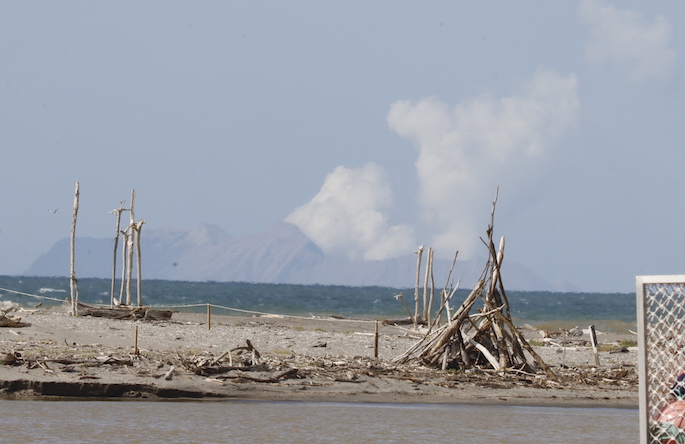As emergency services take on the spewing plumes of smoke on White Island, the place is no stranger to eruptions.
White Island/Whakaari is considered the country's most active cone and largest volcanic structure.
The volcano, which is 48 kilometres offshore from the Bay of Plenty, erupted around 2.30pm on Monday.
From the 1880s, men lived and worked on the island - mining sulphur for items such as gunpowder and fertiliser.
Old newspapers from website Papers Past have reports of eruption sightings since the 1880s.
In October 1885, men working on White Island tried to leave on their boat and refused to return.
"It seems that during the past week the volcanic eruption was something terrific, and the men considered their lives in imminent danger, so much so that they had got their boat out, and would have put to sea but that it was blowing a gale from the sou'-west , and such a sea running that they took shelter where best they could, and waited in fear and trembling to learn their fate," an article from the Thames Advertiser said.
In September 1886, a telegram from the Southland Times said people in Whakatane saw "vast columns of smoke" and steam was blown into the air.
"No danger was apprehended, as fortunately the wind was from the west."
In October 1886, the New Zealand Mail said a "vast column of smoke and steam was blown out to a height of some hundreds of feet".
"The sight was witnessed by a number of the Whakatane townspeople.
"No danger is anticipated, as the wind is from the westward."
In December 1918, fishermen reported seeing an eruption on White Island. The sea between White Island and Whale Island was black on the surface.
In December 1932, people visiting to inspect machinery and the White Island Fertiliser Company plant saw steam and smoke rising from the volcano.
The most notable eruption on White Island took place in September 1914, when a sudden lahar in the middle of the night swept away mine buildings in the crater.
The New Zealand History website said about 10 miners were killed when part of the crater wall collapsed, causing a landslide.
The only survivor was Peter the Great - a tabby cat who was rescued a week later when the disaster was discovered.
In the Otago Witness, a sergeant sent a telegraph which said there were traces of nothing and everything - including sheds and machinery - had been buried.
"The scarcity of signs of house furniture suggests that possibly the greater portion of the living quarters was simply buried where it stood and the men with it."
Mining was attempted again on the island in 1923.
From December 1975 to September 2000, White Island had its longest historic eruption episode.
The last major eruption during this time occurred in July 2000 - the crater floor was covered in scoria and a crater lake was displaced, forming a new explosion crater nearby.
Read more about the history of White Island and its geology here.



0 comments
Leave a Comment
You must be logged in to make a comment.